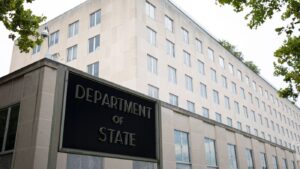Judicial Rulings Halt Trump Administration’s Anti-DEI Directive
Recent judicial decisions have put a temporary stop to the Trump administration’s directive that aimed to eliminate diversity, equity, and inclusion (DEI) programs in schools. The rulings, delivered by three federal judges, underscore the ongoing debate over the federal government’s role in education and its ability to dictate school curriculum.
On Thursday, judges from Maryland, New Hampshire, and Washington, D.C., declared that the federal government overstepped its bounds when it attempted to enforce a ban on DEI programs and related classroom discussions. This decision prevents the U.S. Department of Education from withholding essential federal funds from schools that did not comply with the mandate. The funds in question are critical for supporting low-income students and those with disabilities.
U.S. District Judge Landya B. McCafferty from New Hampshire emphasized the importance of academic freedom and exposing students to diverse perspectives. She stated, “In this case, the court reviews action by the executive branch that threatens to erode these foundational principles.”
Similarly, U.S. District Judge Stephanie A. Gallagher in Maryland expressed concerns about the procedural approach of the government, stating, “This Court is constitutionally required to closely scrutinize whether the government went about creating and implementing [policies] in the manner the law requires.” She further ruled that the government did not meet these standards.
The Ambiguity of “DEI Programs”
One major point of contention in these rulings is the vague definition of what constitutes a “DEI program.” Judge McCafferty criticized the administration for its lack of clarity, pointing out that the “Dear Colleague” letter from the U.S. Education Department failed to specify what qualifies as DEI.
The letter claims that DEI initiatives have misled students about systemic racism in the United States. However, as McCafferty noted, the letter does not define DEI, leaving its implications open to broad interpretation.
U.S. District Judge Dabney L. Friedrich in Washington, D.C. echoed this sentiment, stating that the documents lack an actionable definition of DEI or related practices. In the case brought by the NAACP, Friedrich supported a preliminary injunction.
The Potential Impact on Teachers and Schools
The rulings highlight concerns about the chilling effect these directives could have on educators. McCafferty warned that tying federal funding to unclear policies could create fear and uncertainty among teachers.
She illustrated this with an example of an elementary school teacher who might encourage students to follow the “Golden Rule” as part of DEI, yet could be penalized under the vague definition set forth by the administration.
Furthermore, McCafferty cited a case of a middle school history teacher in New Hampshire who feared accusations of discrimination while teaching historical facts about America’s racial history. The threat of federal funding loss, combined with a DEI reporting portal for parents, raises concerns about a “public ‘witch hunt'” against teachers.
The Debate Over Federal Influence in Education
Despite President Trump’s stated desire to decentralize education and return control to states, the lawsuits suggest the administration is exerting federal influence over school curricula. Two of the rulings emphasize that federal law prohibits the Department of Education from directing school curriculum and administration.
The Department argues that its actions are within legal bounds, as they enforce anti-discrimination laws. However, the judges found these arguments insufficient, noting that the administration’s actions seem to overreach its statutory authority.
Judge Gallagher in Maryland highlighted the discrepancy between the administration’s claims and its actions, stating, “This Court must concern itself with what the Letter actually says, not what the government says the Letter says.”
As the administration is likely to appeal these rulings, the debate over the extent of federal power in educational matters continues to unfold. The outcome will have significant implications for schools across the nation.






